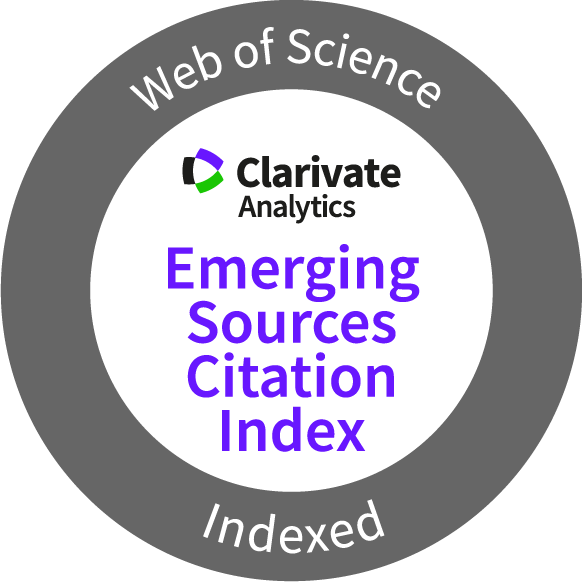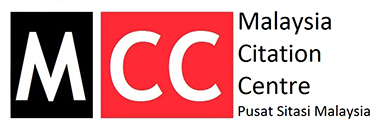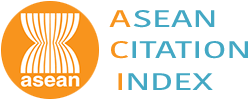Formulation of Anti-Acne Gel Containing Citrus aurantifolia (Christm.) and Aloe barbadensis (L.) Extracts and Evaluating The Impact of High-Pressure and Microwave Processing
Keywords:
Antimicrobial, cosmeceutical, halal, polyherbal gel, pasteurization, stabilityAbstract
Acne is one of the most prevailing skin disorders caused by bacteria, dead skin cells, and oil clogging of hair follicles. In this study, a polyherbal anti-acne gel containing C. aurantifolia and A. barbadensis extracts was developed as a cosmeceutical. Major bioactive fractions in the plant extracts were evaluated by gas chromatography-mass spectrometry (GCMS) analysis. Moreover, C. aurantifolia depicted higher total phenolic, flavonoids, tannins, and ascorbic acid than A. barbadensis extract. The anti-acne gel was prepared by adding 1% of both plant extracts and evaluated for organoleptic properties (color, odor, homogeneity, consistency, washability), spreadability, viscosity, extrudability, pH, and drug contents and compared with a commercial herbal formulation (NuTeen®). The developed gels depicted greater inhibition of Staphylococcus aureus than the commercial formulation with a growth inhibition diameter of 2.40 mm. In-vitro permeation of plant extracts from a gel into phosphate buffer was found at 27.4% after 2.5 hr, and the release behavior was best explained by the Higuchi model (R2=0.97). Finally, for the possible replacement of paraben (synthetic preservative) from the gel, high-pressure processing (600 MPa, 120 s), and microwave pasteurization (700 W, 80 s) were adopted and the stability of gels was evaluated after 4 weeks, and found comparable to their paraben-containing normal counterpart.
Downloads
Metrics
References
Adebayo-tayo, B.C., Akinsete, T.O. & Odeniyi, O.A. 2016. Phytochemical composition and comparative evaluation of antimicrobial activities of the juice extract of Citrus aurantifolia and its silver nanoparticles. Nigerian Journal of Pharmaceutical Research, 12(1): 59–64.
Ahmed, S., Rattanpal, H.S., Gul, K., Dar, R.A. & Sharma, A. 2019. Chemical composition, antioxidant activity and GC-MS analysis of juice and peel oil of grapefruit varieties cultivated in India. Journal of Integrative Agriculture, 18(7): 1634–1642. DOI: https://doi.org/10.1016/S2095-3119(19)62602-X
Aini, N., Permatasani, B., Khasanah, U. & Sukmawati, A. 2018. Antimicrobial activity of lime juice (Citrus aurantifolia) against Propionibacterium acnes and Staphylococcus epidermidis. Advanced Science Letters, 23(12): 12443–12446. DOI: https://doi.org/10.1166/asl.2017.10788
Al-Suwayeh, S.A., Taha, E.I., Al-Qahtani, F.M., Ahmed, M.O. & Badran, M. M. 2014. Evaluation of skin permeation and analgesic activity effects of Carbopol Lornoxicam topical gels containing penetration enhancer. Scientific World Journal, 1-9: 127495. DOI: https://doi.org/10.1155/2014/127495
Rahmawati, D.A. & Setiawan, I. 2019. The formulation and physical stability test of gel fruit strawberry extract (Fragaria x ananassa Duch.). Journal of Nutraceuticals and Herbal Medicine, 2(1): 38–46.
Anand, U., Tudu, C. K., Nandy, S., Sunita, K., Tripathi, V., Loake, G. J., Dey, A. & Proćków, J. 2022. Ethnodermatological use of medicinal plants in India: From ayurvedic formulations to clinical perspectives – A review. Journal of Ethnopharmacology, 284: 114744. DOI: https://doi.org/10.1016/j.jep.2021.114744
Añibarro-Ortega, M., Pinela, J., Barros, L., Ćirić, A., Silva, S.P., Coelho, E. & Ferreira, I.C. 2019. Compositional features and bioactive properties of Aloe vera leaf (fillet, mucilage, and rind) and flower. Antioxidants, 8(10): 444. DOI: https://doi.org/10.3390/antiox8100444
Baroyi, S.A.H.M., Yusof, Y.A., Chin, N.L., Othman, S.H. & Ghazali, N.S.M. 2022. A comparative study of high-pressure processing and microwave pasteurisation on the formation of hydroxymethylfurfural in stingless bee (Heterotrigona itama) honey. Longhua Chinese Medicine, 5: 1-14. DOI: https://doi.org/10.21037/lcm-22-13
Bawankar, R., Deepti, V.C., Singh, P., Subashkumar, R., Vivekanandhan, G. & Babu, S. 2012. Evaluation of bioactive potential of an Aloe vera sterol extract. Phytotherapy Research, 27(6): 864–868. DOI: https://doi.org/10.1002/ptr.4827
Benzidia, B., Barbouchi, M., Hammouch, H., Belahbib, N., Zouarhi, M., Erramli, H., Ait Daoud, N., Badrane, N. & Hajjaji, N. 2019. Chemical composition and antioxidant activity of tannins extract from green rind of Aloe vera (L.) Burm. F. Journal of King Saud University - Science, 31(4): 1175–1181. DOI: https://doi.org/10.1016/j.jksus.2018.05.022
Bhattacharyya, S. & Reddy, P. 2019. Effect of surfactant on azithromycin dihydrate loaded stearic acid solid lipid nanoparticles. Turkish Journal of Pharmaceutical Sciences, 16(4): 425–431. DOI: https://doi.org/10.4274/tjps.galenos.2018.82160
Borse, R.R., Premchandani, L.A., Dhankani, A.R. & Pawar, S.P. 2020. Formulation and evaluation of herbal anti-acne gel containing neem and garlic extract. International Journal of Pharmacy & Pharmaceutical Research, 17(2): 84-94.
Chandira, R.M., Pradeep, Pasupathi, A., Bhowmilk, D., Chiranjib, Jayakar, B., Tripathi, K.K. & Sumpath Kumar, K.P. 2010. Design, development and formulation of antiacne dermatological gel. Journal of Chemical and Pharmaceutical Research, 2(1): 401–414.
Chandrasekar, R. & Kumar, G.S. 2020. Formulation and evaluation of a poly herbal anti-acne gel. Research Journal of Topical and Cosmetic Sciences, 11(1): 5-11. DOI: https://doi.org/10.5958/2321-5844.2020.00002.3
Chen, J., Liu, Y., Zhao, Z. & Qiu, J. 2021. Oxidative stress in the skin: Impact and related protection. International Journal of Cosmetic Science, 43(5): 495–509. DOI: https://doi.org/10.1111/ics.12728
Chen, X., Qin, W., Ma, L., Xu, F., Jin, P., & Zheng, Y. 2015. Effect of high pressure processing and thermal treatment on physicochemical parameters, antioxidant activity and volatile compounds of green asparagus juice. LWT - Food Science and Technology, 62(1): 927–933. DOI: https://doi.org/10.1016/j.lwt.2014.10.068
Danaei, M., Dehghankhold, M., Ataei, S., Hasanzadeh Davarani, F., Javanmard, R., Dokhani, A., Khorasani, S. & Mozafari, M. R. 2018. Impact of particle size and polydispersity index on the clinical applications of lipidic nanocarrier systems. Pharmaceutics, 10(2): 1–17. DOI: https://doi.org/10.3390/pharmaceutics10020057
Daneluz, J., Da Silva Favero, J., Santos, V. D., Angeli, V., Gomes, L.B., Mexias, A.S. & Bergmann, C.P. 2020. The influence of different concentrations of a natural clay material as active principle in cosmetic formulations. Materials Research, 23(2): e20190572. DOI: https://doi.org/10.1590/1980-5373-mr-2019-0572
Dang, T.T., Rode, T.M. & Skipnes, D. 2021. Independent and combined effects of high pressure, microwave, soluble gas stabilization, modified atmosphere and vacuum packaging on microbiological and physicochemical shelf life of precooked chicken breast slices. Journal of Food Engineering, 292: 110352. DOI: https://doi.org/10.1016/j.jfoodeng.2020.110352
Dantas, M.G.B., Reis, S.A.G.B., Damasceno, C.M.D., Rolim, L.A., Rolim-Neto, P.J., Carvalho, F.O., Quintans-Junior, L.J. & Da Silva Almeida, J.R.G. 2016. Development and evaluation of stability of a gel formulation containing the monoterpene borneol. Scientific World Journal, 1: 394685. DOI: https://doi.org/10.1155/2016/7394685
Daryab, M., Faizi, M., Mahboubi, A. & Aboofazeli, R. 2022. Preparation and characterization of lidocaine-loaded, microemulsion-based topical gels. Iranian Journal of Pharmaceutical Research, 21(1): 1–20. DOI: https://doi.org/10.5812/ijpr.123787
Ehiobu, J.M., Idamokoro, M.E. & Afolayan, A.J. 2021. Phytochemical content and antioxidant potential of leaf extracts of Citrus limon (L.) Osbeck collected in the Eastern Cape Province, South Africa. South African Journal of Botany, 141(2): 480–486. DOI: https://doi.org/10.1016/j.sajb.2021.06.001
Fauzi, N.A. & Farid, M.M. 2015. High-pressure processing of Manuka honey: Brown pigment formation, improvement of antibacterial activity and hydroxymethylfurfural content. International Journal of Food Science and Technology, 50(1): 178–185. DOI: https://doi.org/10.1111/ijfs.12630
Gurning, K., Simanjuntak, H.A., Purba, H., Situmorang, R.F.R., Barus, L. & Silaban, S. 2021. Determination of total tannins and antibacterial activities ethanol extraction seri (Muntingia calabura L.) leaves. Journal of Physics, 1811(1): 012121. DOI: https://doi.org/10.1088/1742-6596/1811/1/012121
Halla, N., Fernandes, I.P., Heleno, S.A., Costa, P., Boucherit-Otmani, Z., Boucherit, K., Rodrigues, A.E., Ferreira, I.C. & Barreiro, M.F. 2018. Cosmetics preservation: A review on present strategies. Molecules, 23(7): 1571. DOI: https://doi.org/10.3390/molecules23071571
Hameed, R.H., Al-Shareefi, E. & Hameed, I.H. 2018. Analysis of methanolic fruit extract of Citrus aurantifolia using gas chromatography – Mass spectrum and FTIR techniques and evaluation of its anti-bacterial activity. Indian Journal of Public Health Research and Development, 9(5): 480–486. DOI: https://doi.org/10.5958/0976-5506.2018.00490.4
Hin, K.F., Yusof, Y.A., Salim, N. & Mohd Amin, N.A.A. 2023. Formulation and characterization of polyherbal anti-acne gel containing Citrus aurantifolia and Aloe barbadensis extracts for the management of acne vulgaris. Food Research, 6 (Suppl. 3): 45 - 53. DOI: https://doi.org/10.26656/fr.2017.6(S3).4
Hou, H.S., Bonku, E.M., Zhai, R., Zeng, R., Hou, Y.L., Yang, Z.H. & Quan, C. 2019. Extraction of essential oil from Citrus reticulate Blanco peel and its antibacterial activity against Cutibacterium acnes (formerly Propionibacterium acnes). Heliyon, 5(12): e02947 DOI: https://doi.org/10.1016/j.heliyon.2019.e02947
Isfahani, F.R., Tavanai, H. & Morshed, M. 2017. Release of aloe vera from electrospun aloe vera-PVA nanofibrous pad. Fibers and Polymers, 18: 264-271. DOI: https://doi.org/10.1007/s12221-017-6954-9
Iyer, A., Jyothi, V.G.S., Agrawal, A., Khatri, D.K., Srivastava, S., Singh, S.B. & Madan, J. 2021. Does skin permeation kinetics influence efficacy of topical dermal drug delivery system?: Assessment, prediction, utilization, and integration of chitosan biomacromolecule for augmenting topical dermal drug delivery in skin. Journal of Advanced Pharmaceutical Technology & Research, 12(4): 345-355. DOI: https://doi.org/10.4103/japtr.japtr_82_21
Keshri, P. 2020. Antiacne synergistic herbal face wash. Formulation, 9(7): 1899–1907.
Kola-Mustapha, A.T., Yohanna, K., Ghazali, Y. & Ayotunde, H.T. 2020. Design, formulation and evaluation of Chasmanthera dependens Hochst and Chenopodium ambrosioides Linn based gel for its analgesic and anti-inflammatory activities. Heliyon, 6(9): e04894. DOI: https://doi.org/10.1016/j.heliyon.2020.e04894
Kumar, T.P. & Eswaraiah, M.C. 2020. Formulation and evaluation of topical hydrogel containing antifungal drug. Pharmacy & Pharmacology International Journal, 8(4): 249–254. DOI: https://doi.org/10.15406/ppij.2020.08.00302
Kusuma, S.A.F., Abdassah, M. & Valas, B.E. 2018. Formulation and evaluation of anti acne gel containing Citrus aurantifolia fruit juice using carbopol as gelling agent. International Journal of Applied Pharmaceutics, 10(4): 147–152. DOI: https://doi.org/10.22159/ijap.2018v10i4.26788
Kutlu, N., Pandiselvam, R., Saka, I., Kamiloglu, A., Sahni, P. & Kothakota, A. 2022. Impact of different microwave treatments on food texture. Journal of Texture Studies, 53(6): 709–736. DOI: https://doi.org/10.1111/jtxs.12635
Manna, M. & Rudra, A. 2020. Development and formulation of aloe vera emulgel. GSC Biological and Pharmaceutical Sciences, 12(2): 161-166. DOI: https://doi.org/10.30574/gscbps.2020.12.2.0262
Mate, A., Ade, P., Pise, A., More, S., Pise, S. & Kharwade, R. 2021. Formulation and evaluation of polyherbal gel for the management of acne. International Journal of Current Research and Review, 13(4): 117–122. DOI: https://doi.org/10.31782/IJCRR.2021.13432
Muniraj, S.N., Yonganada, R., Nagaraja, R. & Baranthi, D.R. 2020. Preparation and characterization of nanogel drug delivery system containing clotrimazole an anti-fungal drug. Indo-American Journal of Pharmaceutical Research, 10(07): 1013-1022.
Nejatzadeh-Barandozi, F. 2013. Antibacterial activities and antioxidant capacity of aloe vera. Organic and Medicinal Chemistry Letters, 3: 1-8. DOI: https://doi.org/10.1186/2191-2858-3-5
Oelschlaeger, C., Marten, J., Péridont, F. & Willenbacher, N. 2022. Imaging of the microstructure of Carbopol dispersions and correlation with their macroelasticity: A micro- and macrorheological study. Journal of Rheology, 66(4): 749–760. DOI: https://doi.org/10.1122/8.0000452
Okafo, S.E., Iwetan, B.B., Odiri, O.O. & Nwankwo, L.U. 2022. Anti-inflammatory property of gels formulated using Dacryodes edulis bark ethanol extract. African Journal of Biomedical Research, 25: 413-418.
Prabhakar, P.K., Nath, D., Singh, S., Mittal, A. & Baghel, D.S. 2020. Formulation and evaluation of polyherbal anti-acne combination by using in-vitro model. Biointerface Research in Applied Chemistry, 10(1): 4747–4751. DOI: https://doi.org/10.33263/BRIAC101.747751
Roy, S., Bose, S., Sarkar, D., Mandal, S., Sarkar, S. & Mandal, S.K. 2020. Formulation and evaluation of anti-acne gel containing Murraya koeinigii extract. International Journal of Current Pharmaceutical Research, 12(4): 108–113. DOI: https://doi.org/10.22159/ijcpr.2020v12i4.39095
Sainy, J., Atneriya, U. & Maheshwari, R. 2021. Development of an Aloe vera-based Emulgel for the Topical Delivery of Desoximetasone. Turkish journal of Pharmaceutical Sciences, 18(4): 465-473. DOI: https://doi.org/10.4274/tjps.galenos.2020.33239
Salamanca, C.H., Barrera-Ocampo, A., Lasso, J.C., Camacho, N. & Yarce, C.J. 2018. Franz diffusion cell approach for pre-formulation characterisation of ketoprofen semi-solid dosage forms. Pharmaceutics, 10(3): 148-157. DOI: https://doi.org/10.3390/pharmaceutics10030148
Saljooghianpour, M. & Javaran, T.A. 2013. Identification of phytochemical components of aloe plantlets by gas chromatography-mass spectrometry. African Journal of Biotechnology, 12(49): 6876–6880.
Schmitt, P de O., Fischer, A F., da Silva, R.M. L. & Cruz, A.B. 2022. Compatibility and efficiency of preservatives in emulsive cosmetics containing high surfactant content. Brazilian Journal of Pharmaceutical Sciences, 58: e191088. DOI: https://doi.org/10.1590/s2175-97902022e191088
Sharma, M. & Dev, S.K. 2018. Preparation and evaluation of anti-acne herbal gel. European Journal of Biomedical and Pharmaceutical Sciences, 4(10): 578-581.
Suksaeree, J. & Chuchote, C. 2018. Formulation and characterization of topical anti-acne spot gel containing herbal extracts. EDP Sciences, 237: 02005. DOI: https://doi.org/10.1051/matecconf/201823702005
Varma, V.N.S.K., Maheshwari, P., Navya, M., Reddy, S.C., Shivakumar, H.G. & Gowda, D.V. 2014. Calcipotriol delivery into the skin as emulgel for effective permeation. Journal of the Saudi Pharmaceutical Society, 22(6): 591–599. DOI: https://doi.org/10.1016/j.jsps.2014.02.007
Wolkenstein, P., Machovcová, A., Szepietowski, J.C., Tennstedt, D., Veraldi, S. & Delarue, A. 2018. Acne prevalence and associations with lifestyle: a cross-sectional online survey of adolescents/young adults in 7 European countries. Journal of the European Academy of Dermatology and Venereology, 32(2): 298-306. DOI: https://doi.org/10.1111/jdv.14475
Yen, W.F, Basri, M., Ahmad, M. & Ismail, M. 2015. Formulation and evaluation of galantamine gel as drug reservoir in transdermal patch delivery system. The Scientific World Journal, 2015: 1–7. DOI: https://doi.org/10.1155/2015/495271
Published
How to Cite
Issue
Section
Any reproduction of figures, tables and illustrations must obtain written permission from the Chief Editor (wicki@ukm.edu.my). No part of the journal may be reproduced without the editor’s permission




















